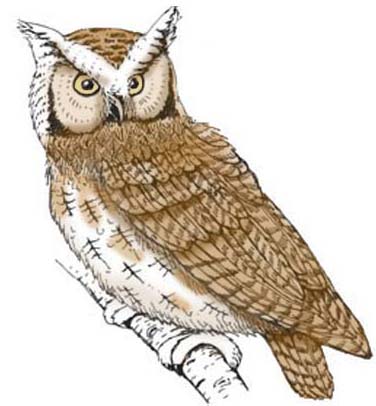

They are found in eastern North America from eastern Montana and the Great Lakes to Nova Scotia, and south to Florida, the Gulf of Mexico, and northeastern Mexico.
They live in wooded areas, orchards, among homes and in parks.
They are small owls, not much bigger than a robin. They have short, rounded wings. Both wings and tail have dark stripes (bars). They are a spotty, rusty-brown to gray color. Their chest and belly are light with dark crosses marking them. They have yellow eyes and beak.
They are nocturnal, sleeping (roosting) during the day close to the trunks of thick trees or in tree holes. They have 2 kinds of calls, one to mark their territory to other males and one to attract females. Males are territorial.
They eat small mammals and birds with insects added in the summer. They catch their prey by swooping down and grabbing them with their claws (talons), but can catch flying insects right in their mouths.
Females lay 2 – 6 white eggs.
Kingdom: Animalia
Phylum: Chordata
Subphylum: Vetebrata
Class: Aves
Order: Strigiformes
Family: Strigidae
Genus: Megascops
Species: M. asio
When you research information you must cite the reference. Citing for websites is different from citing from books, magazines and periodicals. The style of citing shown here is from the MLA Style Citations (Modern Language Association).
When citing a WEBSITE the general format is as follows.
Author Last Name, First Name(s). "Title: Subtitle of Part of Web Page, if appropriate." Title: Subtitle: Section of Page if appropriate. Sponsoring/Publishing Agency, If Given. Additional significant descriptive information. Date of Electronic Publication or other Date, such as Last Updated. Day Month Year of access < URL >.
Amsel, Sheri. "Owl (Eastern Screech)" Exploring Nature Educational Resource ©2005-2024. December 13, 2024
< http://www.exploringnature.org/db/view/Owl-Eastern-Screech >

